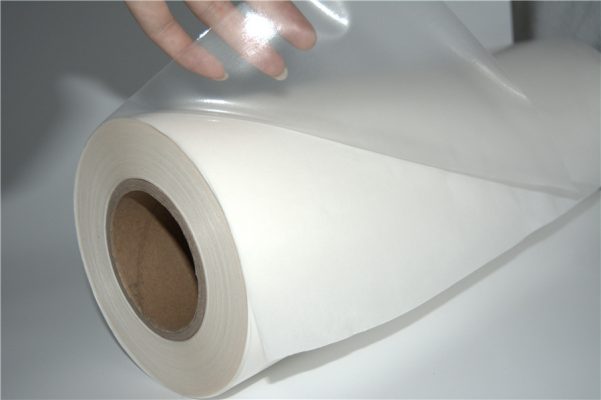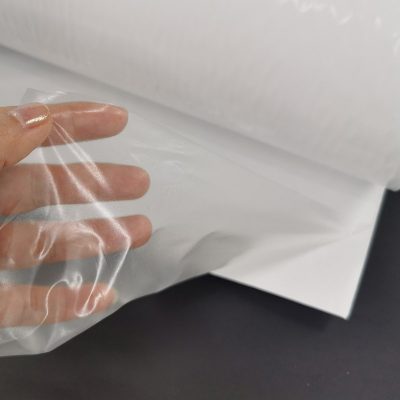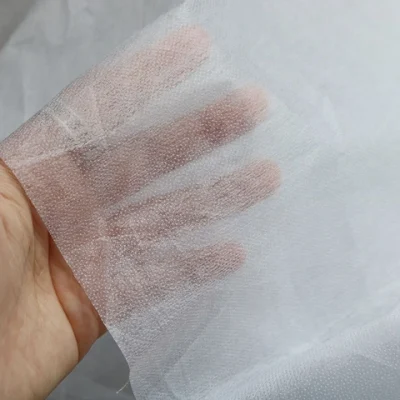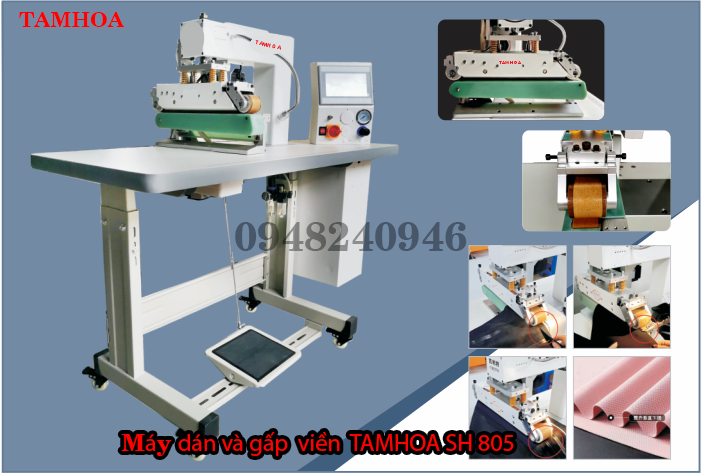Types of industrial sewing threads and heat-sealing glue used in the garment industry
Without industrial sewing thread, no product can be completed because they are what connect the fabric fibers together. To learn more about sewing thread, please follow Tam Hoa’s article below.
What is heat seal glue?
Hot melt adhesive is a special type of adhesive that can liquefy when exposed to high temperatures and harden again when cooled. This type of adhesive is widely used in many fields, from industrial production to clothing and handicrafts.
Structure and operating principle
Hot melt adhesives are usually made from thermoplastics, combined with additives to increase adhesion, durability and flexibility. When heated to a certain temperature, the adhesive will turn into a liquid state, easily adhering to the surface to be connected. When cooled, the adhesive will harden to form a strong bond.
Advantages of heat press glue
- Easy to use: No mixing required, just heat and apply to surface.
- Fast: The bonding process is fast, saving time.
- High strength: The bond formed is very strong, resistant to tensile and impact forces.
- Wide range of applications: Can be used to connect many different materials such as fabric, plastic, wood, metal.
- Safety: Does not contain toxic solvents, environmentally friendly.
Popular types of heat press glue
- Stick-type heat-sealing glue: The most popular form of glue, easy to use and store.

- Film-type heat-sealing glue: Thin glue, often used to bond thin materials.

- Granular heat press glue: Small glue, often used in automatic sealing machines.

What is sewing thread?
Sewing thread is a long, thin, soft thread used to join or attach layers of material together during the sewing process. Sewing thread is commonly made from a variety of materials such as cotton, polyester, nylon, silk, or other synthetic fibers. The choice of sewing thread depends on the type of material you are sewing and the end use of the product.

Structure of common industrial sewing thread today
Common industrial sewing threads today have complex structures and are designed to meet the specific requirements of the production process. The structure of industrial sewing threads usually includes the following elements:
- Core Yarn: This is the main fiber that forms the basic structure of the thread. This fiber is usually chosen based on the properties required for the particular application. For example, cotton, polyester, nylon, or other fibers may be used.
- Coating: Some industrial sewing threads may be coated with a surface protectant to increase durability and reduce friction during sewing. Coatings may also be used to improve the thread’s water-resistant or fire-resistant properties.
- Bonding Agent: Some threads can be manufactured using a bonding agent to bind the fibers together, especially in specialty threads such as knotless sewing threads or threads used in specialized sewing machines.
- UV-resistant Yarn: In some applications, such as when used in outdoor environments, there may be a requirement to use a UV-resistant yarn to protect the yarn from the effects of the sun’s UV rays.
- Conductive Yarn: Special threads can be manufactured with conductive yarn to create products that are electrically conductive, such as in the electronics industry.
- Heat-resistant Yarn: In some applications, sewing thread needs to be heat resistant to withstand high temperatures without damage or discoloration.
- Anti-wicking Agent: This can be added to the thread to reduce water absorption and keep the thread from becoming damp in wet conditions.

Distinguishing types of thread
There are many different types of sewing thread, chosen depending on the specific purpose of use. Here are some common types of sewing thread and the differences between them:
Cotton Thread
Features: Soft, breathable, suitable for garment products.
Use: Clothing, home decoration.
Polyester Thread
Features: Durable, sun-resistant, good abrasion resistance.
Uses: Wide range of applications, from clothing to furniture.
Nylon Thread
Features: Elastic, abrasion resistant, water resistant.
Uses: Sportswear, bags, outdoor products.
Leather Thread
Features: High strength, abrasion resistance, high hardness.
Use: Leather products, wallets, shoes.
Wool Thread
Features: Soft, warm, suitable for wool.
Use: Wool products, sweaters.
Metallic Thread
Features: Metallic, creating a sparkling effect.
Use: Decorative sewing, toys, sports products.
Elastane Thread
Features: Elastic, restores original shape after stretching.
Uses: Underwear, sleepwear, dresses, products that need to stretch.
Fire-resistant Thread
Features: Withstands high temperatures without burning.
Uses: Protective clothing, fire retardant products.
Water-resistant Thread
Features: Waterproof.
Uses: Outdoor products, waterproof electronics.
Conductive Thread
Characteristics: Conductive, commonly used in electronic products.
Use: Touch screen, soft electronics.
Types of industrial sewing threads used in the garment industry
Common types of sewing thread include:
- Cotton Thread: Commonly used for knitted products such as casual clothing, pillows, and home decor.
- Polyester Thread: Has better durability and sun protection than cotton thread, suitable for a wide variety of materials and applications.
- Nylon Thread: Very strong and durable, suitable for sewing products that require high abrasion resistance such as bags, straps, and sportswear.
- Leather Thread: Designed for sewing leather and other tough materials.
- Elastane Thread: Has elasticity, suitable for sewing products that require elasticity such as underwear, sleepwear, and dresses.
- Kevlar Thread: Extremely strong and heat resistant, commonly used in sewing products that require strength and fire resistance such as protective clothing.

Notes when using industrial machines
- When using industrial machine thread, there are some important notes to ensure the safety, performance and durability of the machine. Here are some notes when using industrial machine thread:
- Select the Right Thread Type: Select the right thread type for your specific material and application. Use quality thread to ensure durability and seam quality.
- Check Thread Condition: Before starting a new project, inspect the thread to ensure that it is not damaged or contains manufacturing defects that could affect the sewing process.
- Check Thread Sensors: If your machine has thread sensors, check them to ensure they are working properly. This can help avoid situations where the thread breaks mid-sew.
- Adjusting the Foot Pressure: Too much or too little foot pressure can affect the stitching. Make sure you adjust the foot pressure to suit the type of material and thread you are using.
- Check Cutter: If the machine has an automatic thread trimmer function, periodically check and maintain the cutter to ensure high performance and precise sewing.
- Use Thread Appropriate to Machine Speed: Each type of industrial sewing machine has a different machine speed. Choose thread that can withstand the sewing speed of your machine to avoid thread breakage or other problems.
- Check Power and Electrical Connections: Make sure the machine is properly connected and receiving sufficient power. Check power and connections periodically to avoid unexpected problems.
- Perform Regular Maintenance: Perform regular maintenance according to the manufacturer’s instructions to ensure the machine always operates stably.
- Employee Training: Train employees to use the machine properly to avoid accidents and ensure high performance.
- Pay Attention to the Work Environment: Ensure a clean and comfortable work environment to optimize employee performance and comfort.
Tam Hoa Technical Company Limited
Factory Address: Que Vo 2 Industrial Park, Ngoc Xa Commune, Que Vo Town, Bac Ninh Province, Vietnam
Southern Branch: 601 Truong Chinh, Tan Thoi Nhat Ward, District 12, Ho Chi Minh City Hotline
: 0948240946 / 0968963732
Phone/Fax 0222-3634 129/ 3634 130
MST 2300886897
Web: https://tamhoaseamless.com/
Email: [email protected]
Business scope: Gluing machines, fabric cutting machines, folding machines, heat presses, ultrasonic welding machines, providing production equipment in the garment, leather and footwear industries.







